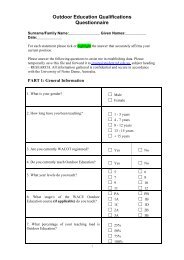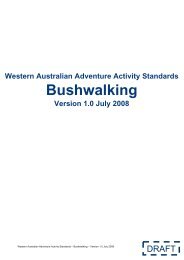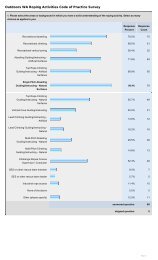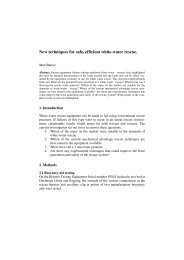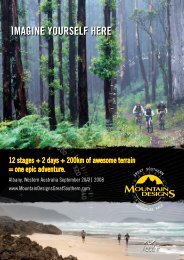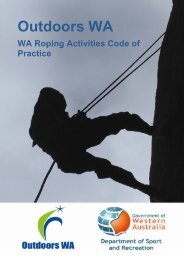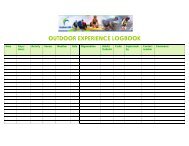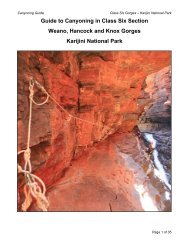Outdoor Adventure Activities Benefits Catalogue - Outdoors WA
Outdoor Adventure Activities Benefits Catalogue - Outdoors WA
Outdoor Adventure Activities Benefits Catalogue - Outdoors WA
You also want an ePaper? Increase the reach of your titles
YUMPU automatically turns print PDFs into web optimized ePapers that Google loves.
Health4.2.4. Health and TherapeuticMost Australians fail to meet recommended physical activity levels. Participation in a rangeof physically active pursuits is recommended throughout the life course by the World HealthOrganisation and particularly for healthy ageing (Doney & Packer, 2008). Of all the types oftime in an individual’s day, leisure–time has the greatest scope for increasing the healthpromoting levels of physical activity. The benefits of raising levels of physical activity aredirectly associated in particular with improved cardiovascular health, blood pressure, andmental health.Health promotion and health research literature often includes physical activity in the out-ofdoorsas beneficial for an individual’s overall health and wellbeing, in particular for physicaland mental health. Research in this area has found that better health is achieved when morevaried physical activities are included, and when a broader social network is involved (Giles-Corti & Donovan, 2003). <strong>Outdoor</strong> adventure activities offer such a variety and complimenturban activities with offerings such as bushwalking, mountain biking and cycle touring,canoeing, sailing, skiing, orienteering, rock climbing, snorkelling, surfing etc.The public health benefits of leisure-time physical activity are linked to the accessibility ofindividuals to:• living environments conducive to out-of-doors activity, such as walking and cycling• social environments conducive to shared experiences and support networks• health care that incorporates ‘green prescriptions’ encouraging physical activity as apart of health consultations (Elley, Kerse, Arroll, & Robinson, 2003)Leisure-time physical activity is seen as having the greatest potential for improvements at apopulation level. The following summaries of the health related literature highlight howoutdoor adventure activities provide stimulating opportunities for individuals and groups toengage in health promoting levels of physical activity. Out-of-doors environments are healthysocial and physical places for individuals to be physically active in.Giles-Corti and Donovan (2003) analysed correlations between individual, socialenvironmental, and physical environmental aspects of walking. The study was conducted inPerth in 1995-96 with randomly sampled adults aged 18-59 years (n=1773). It was concludedthat walking was a popular leisure activity (68.5% of participants walked for recreation) andthat those who participate in a wider variety of physical activities are more likely to achievethe recommended levels of physical activity for optimal health than those who don’t. Thepublic health benefits of walking for individuals and for the environment were highlighted.The study provided empirical evidence to support the higher likelihood of achievingrecommended levels of walking in those with a positive attitude towards being physicallyactive, as well as in those who exercised with a number of significant others (the oddsincreasing with the number of significant others increasing), and those who lived in a physicalenvironment conducive to walking.Elley, Kerse, Arroll and Robinson (2003) studied the long-term effectiveness of a programthat uses counselling on physical activity (‘green prescriptions’) as a part of general practicetreatment for sedentary patients. Results highlight the effectiveness of counselling patients onPage 15






